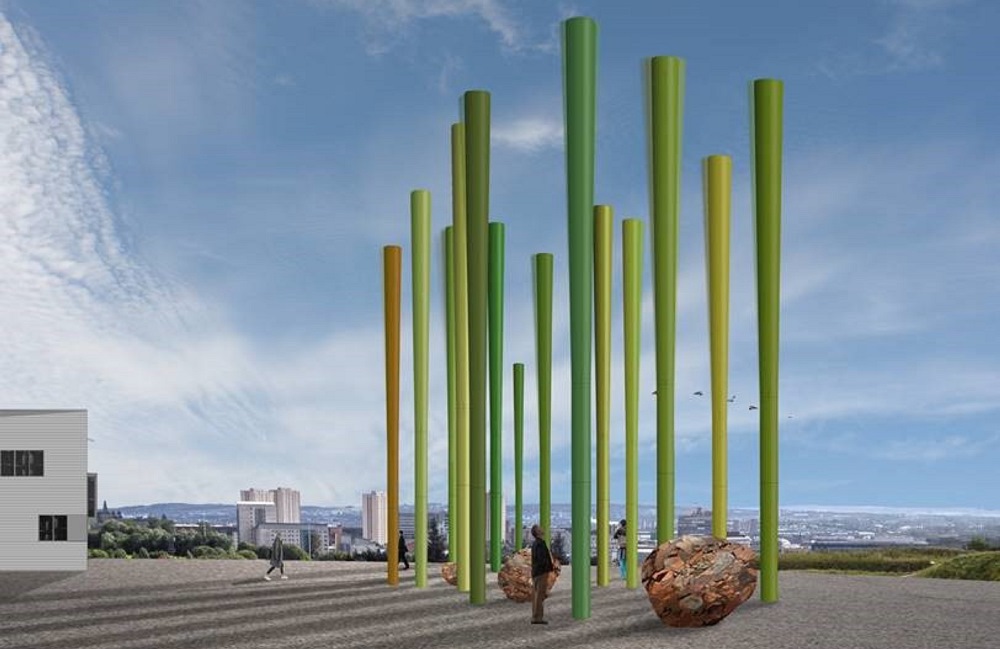The Port Dundas terminus was established at 100 Acre Hill in northern Glasgow, Scotland between 1786 and 1790 and was named after Sir Lawrence Dundas, one of the major backers of the Forth and Clyde Canal Company.
Port Dundas formed the terminus of a branch of the Forth and Clyde Canal in the centre of Glasgow, linking to the adjacent Monkland Canal. It became an industrial centre in the 19th century, with textile mills, chemical works, granaries, distilleries, glassworks, iron foundries, power stations and engineering works all operating in the area.
In 1859, a brick chimney was built at Port Dundas for F. Townsend. At 454 feet (138 m) it was the tallest chimney in the world at the time, with an outside diameter of 32 feet (9.8 m) at ground level.
Now, a new housing development is planned for this brownfield site which has been lying derelict and mostly abandoned for many years. The rebirth at Dundas Hill could include hundreds of individually designed homes and flats, shops, a pub, restaurant, a hotel, leisure uses and open space.
The neighborhood is fast gaining prominence as an alternative, creative destination where watersports and urban adventure activities blend with a strong arts and cultural presence. There is a pioneering spirt in the area, showing how this can influence regeneration right from the start.
The 600-home masterplan prepared for the Dundas Hill site provides an opportunity for high density urban and custom housing focused on the strong creative and design led identity of the city. Dundas Hill will also host an installation by the Land Art Generator Initiative, a public art project that also generates large scale, clean energy.
A futuristic ‘Wind Forest’ will be created using bladeless turbines from a Spanish company called Vortex. Each of the stems will be coloured using a palette that draws from the year-round colours of natural woodlands. The 13-metre high wind stems (about the average height of a rowan, hazel or hawthorn tree) generate power by oscillating from a fixed point in the lower half of the structure. The top of each stem has the capacity to circle up to 2 metres across which when amplified over the entire forest will be a spectacular way to generate energy.
Bigg Regeneration, a partnership between Scottish Canals and Igloo Regeneration Fund, are behind the proposed revitalization.
The 100 Acre Hill site was most recently occupied by a distillery complex owned by Diageo but has been vacant since 2010.
In April of 2017, the project was given a £12.6 million investment by the Glasgow City Region committee.
The funding will go towards the construction of a new bridge in Cowlairs, as well as the acquisition of a piece of land occupied by the former distillery.
Frank McAveety, the chairman of the committee and leader of the council, says: “This regeneration is taking place in a part of the city that has been through some difficult times. This work is about opening up the area and bringing the north in to the city.”
Image courtesy of Igloo Regeneration.
See April 13, 2017 Scottish Housing News about funding approval.
See January 24, 2017 Scottish Housing News article about proposal.

